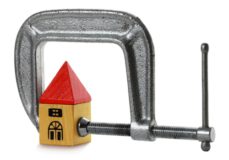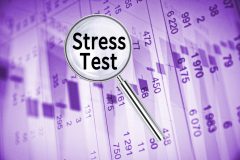By The Spy on
April 9, 2021
Important Clarifications… Here’s more of what you need to know about the new stress test rules, straight from the regulator: On the Need to Act Now 25.6% of uninsured mortgages originated between July and December 2020 had a “qualified TDS” above 43%, OSFI says. 44% is the limit, and for a healthy market you really want to see that number...
read more
By The Spy on
April 8, 2021
Here’s the latest on what we know about the banking regulator’s new mortgage stress test proposal… 12:10 p.m. ET Update OSFI has proposed a tougher minimum qualifying rate for uninsured mortgages. As planned, it will be the higher of: the mortgage contract rate plus 2%, or a 5.25% floor rate That 5.25% floor is 0.46%-pts higher than the current minimum...
read more
By The Spy on
April 7, 2021
For those who think the 4.79% minimum qualifying rate (mortgage “stress test” rate) is too strict, here’s a breaking update. Tweaks to the often-criticized “stress test” are back on the table. OSFI said today that it “will resume its policy work on the minimum qualifying rate for uninsured mortgages by issuing a new consultation tomorrow at noon (ET).” “OnJanuary 24,...
read more
By The Spy on
January 31, 2021
The Feds would like you to think they want to help first-time buyers. The Liberals’ over-hyped and costly First-time Home Buyer Incentive is a case in point. “The First-time Home Buyer Incentive makes it easier for you to buy a home,” they say. What the government omits to mention is that it’s stood by and allowed the mortgage qualifying rate...
read more
By The Spy on
January 25, 2021
Our national housing agency wants to put your mind at ease, sort of. CMHC published its annual stress test this week. Its report claimed CMHC would remain solvent barring a catastrophic scenario entailing: a 48% home price crash, 25% unemployment, and no government intervention (full details here). The report made headlines across the media, as unlikely as some of its...
read more
By The Spy on
January 24, 2021
The government’s “B20” stress test has blocked countless people from buying rental properties as investments. The current 4.79% minimum qualifying rate means would-be buyers have to prove they can afford mortgage payments far above what they’d really pay. Fortunately for some borrowers, there are alternative lenders (e.g., credit unions) that don’t impose the federal stress test. They qualify borrowers on...
read more
By The Spy on
November 14, 2020
—The Mortgage Report: Weekend Edition— Canada’s rate outlook got a boost this week from two influential developments: Promising vaccine news (20 potential vaccines are in late-stage trials, including Pfizer’s drug that’s reportedly over 90% effective), and The widespread acceptance of Joe Biden’s presidential victory. This much-needed dose of good news led investors to sell government bonds, which is typical when...
read more
By The Spy on
November 5, 2020
If you’re hoping the mortgage stress test gets easier—so you can qualify for bank financing—you’ve got more waiting to do. Canada’s banking regulator, OSFI, says it’s not ready to adjust the stress test just yet, despite proposing last February to ease it. OSFI spokesperson Michael Toope tells us: “On March 13, 2020, OSFI suspended all of its consultations and policy...
read more
By The Spy on
September 30, 2020
—The Mortgage Report: Sept. 30— The costs you’re expected bear to carry a new mortgage have never been higher—at least based on how lenders assess you as a mortgage applicant. Rocketing home prices and a stubbornly high “stress test rate” have pushed the basic inflation-adjusted cost to carry a home (i.e., average mortgage payment + heat + property taxes) to...
read more
By The Spy on
September 1, 2020
On March 13, 2020, our banking regulator suspended its work on improving Canada’s uninsured mortgage stress test. Its decision was made in response to challenges posed by COVID-19. Prior to that, OSFI had indicated that a new and improved stress test would start as soon as April 6, 2020, pending public consultation and review. At the time, the regulator acknowledged...
read more
 log in
log in









